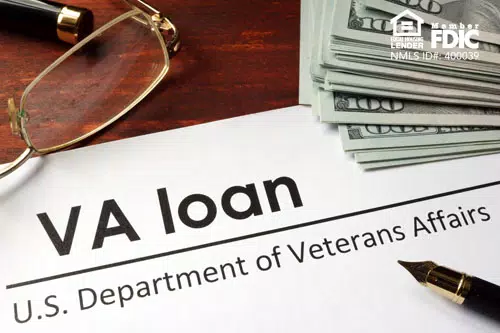If you are a veteran or active member of the military and are considering renovating your home or buying a new one, consider securing a VA loan. Current and former U.S. service members, as well as spouses of U.S. service members, are potentially eligible for a VA loan. This loan provides access to lower interest rates, requires no private mortgage insurance, and requires little to no down payment. However, you must meet specific qualifications to receive a VA loan.
Ensure You Meet VA Loan Eligibility
Not every service member is eligible for a VA loan. Here are the different eligibility categories:
Former Service Members
There are minimum service requirements for former service members, depending on when they were on active duty:
- World War Two (1940-1947) - Minimum 90 consecutive days of service
- Peacetime (1947-1950) - 181 days
- Korean War (1950-1955) - 90 days
- Post-Korean War (1955-1964) - 90 days
- Vietnam War (1964-1975) - 181 days
- Post-Vietnam War (1980-1990) - 181 days
- Persian Gulf War (1990-present) - Two years (or no less than 90 days of the full amount of time called for duty)
You might still be eligible even if you didn’t reach the minimum time in service requirement. For example, if you were discharged early due to a disability related to your service, you are still eligible.
Active Duty Members and Spouses
For those who haven’t left service or are the surviving spouse of a service member killed in the line of duty, the eligibility requirements are:
- Active Duty - 90 consecutive days in service (or 181 days in peacetime)
- Active Reserve/National Guard - Minimum six years
- Unmarried spouse - No minimum service time is required if the spouse was killed in the line of duty
- The spouse of a veteran who was MIA/POW - At least 90 days have passed since the Veteran was POW/MIA
Other Eligibility Considerations
You might also be eligible if you served as a member of the ‘Selected Reserve’ through the Army, Air Force, Navy, or another military branch. A veteran who is not otherwise qualified but has completed six years in the Selected Reserve can also meet the criteria. Someone with an honorable discharge, who is on the retired list, who has continued service in the Selected Reserve, or who is a transfer to a Standby or Ready Reserve will be considered if they meet the six-year requirement.
Some U.S. citizens who served in a country that was an ally of the U.S. during World War Two may also be able to establish eligibility for a VA loan. Other lesser-known qualifications could also apply. Refer to the Veteran’s Affairs website for the full list of eligibility categories and exceptions.
Receive a Certificate of Eligibility
Once an applicant has met the service requirements to become eligible for a VA loan, obtaining a Certificate of Eligibility (COE) is next. This is a required document that VA-approved lenders will use to verify that you’re eligible for the VA’s program.
You can obtain your COE through the Department of Veterans Affairs website or request it by mail using VA Form 26-1880. The document will then become available to print or download through the VA’s website. Your lender can also help you to receive your COE as you go through the VA loan process.
Find a Lender Who Works with VA Loans
The Department of Veterans Affairs backs VA loans to guarantee payment if a borrower is unable to pay or is at risk of foreclosure. To be approved for and receive a VA loan, you’ll need to find a lender who offers VA loans. Each lender has specific requirements, outside of the VA eligibility requirements, that you will have to meet to qualify with them.
Meet Lender Borrowing Requirements
Different VA lenders will have different qualification requirements. Two factors that lenders may vary on most are credit requirements and income requirements.
A credit score of at least 640 is generally considered the minimum a lender will accept when financing a home. Your debt-to-income (DTI) ratio calculates your total monthly debt against your gross monthly income. The higher your DTI, the riskier the loan is to a lender. The VA’s benchmark for DTIs is 41%, but some lenders might consider a higher DTI than this.
Even if several lenders approve you, the interest rates and fees you pay could differ. These factors all need to be considered when choosing the right lender for you. Here's a calculator to help you determine your VA loan payments based on the purchased price, down payment, interest rate, military experience, and prior VA loan use.
Qualifying for a VA loan is easier when you work with a lender with the knowledge and experience to help you navigate the process. NASB has specialized VA loan experts available to talk to you today at 888-661-1982. Click here to get started.




